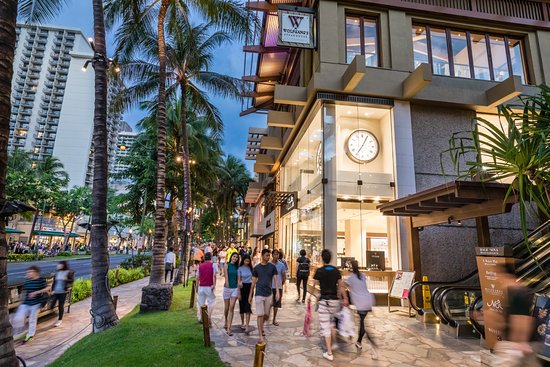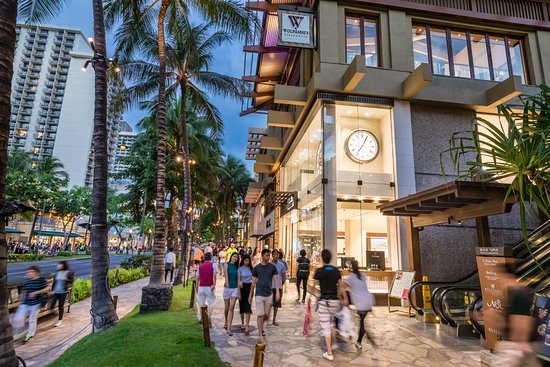Visitors to the Hawaiian Islands spent a total of $1.39 billion in February 2019, a decrease of 2.7 percent compared to February 20181, according to preliminary statistics released today by the Hawaii Tourism Authority. This is another dip following the 3.8 decrease in January.
In February, visitor spending increased from the U.S. West (+4.7% to $503.3 million) but declined from U.S. East (-6.7% to $370.9 million), Japan (-0.8% to $170.1 million), Canada (-0.7% to $150.7 million) and All Other International Markets (-15.3% to $188.7 million) compared to a year ago.
On a statewide level, average daily visitor spending was down slightly (-0.9% to $200 per person) in February year-over-year. Visitors from Japan (+3.3%), U.S. West (+1.2%) and All Other International Markets (+0.7%) spent more per day while visitors from U.S. East (-4.1%) and Canada (-1.0%) spent less.
A total of 782,584 visitors (+0.5%) came to Hawaii in February 2019, up slightly from the same month last year. Arrivals by air service (+0.3% to 766,293) were comparable to last February while arrivals by cruise ships (+12.1% to 16,291) increased. However, total visitor days2 declined (-1.9%) versus February 2018 due to a shorter average length of stay by visitors from most markets.
The average daily census3 of total visitors in the Hawaiian Islands on any given day in February was 248,244, down 1.9 percent compared to February last year. Arrivals by air service realized growth from U.S. West (+6.5%), Canada (+2.5%) and Japan (+1.1%) which offset decreases from U.S. East (-0.9%) and All Other International Markets (-17.2%).
Visitor spending on Oahu decreased (-1.6% to $613.0 million) while visitor arrivals (456,820) were flat compared to last February. Maui recorded increases in both visitor spending (+1.2% to $413.0 million) and visitor arrivals (+1.5% to 220,801). The island of Hawaii saw declines in visitor spending (-17.5% to $192.3 million) and visitor arrivals (-14.8% to 137,502). Visitor spending increased on Kauai (+4.7% to $153.5 million) while visitor arrivals were similar (+0.2% to 104,167) to February 2018.
A total of 1,010,961 trans-Pacific air seats serviced the Hawaiian Islands in February, up slightly (+0.5%) from a year ago. Growth in air seats from Canada (+10.9%), Japan (+6.3%), Oceania (+1.8%), U.S. West (+0.5%) and U.S. East (+0.5%) offset declines from Other Asia Markets (-25.1%).
Year-to-Date 2019
Through the first two months of 2019, visitor spending declined (-2.4% to $3.01 billion) compared to the same period last year. Visitor arrivals increased (+1.8% to 1,603,205) but a shorter length of stay (-1.8% to 9.43 days) resulted in no growth in visitor days. Average daily spending (-2.4% to $199 per person) was lower compared to a year ago.
Visitor spending decreased from U.S. West (-0.8% to $1.06 billion), U.S. East (-1.8% to $832.5 million), Japan (-3.8% to $349.6 million), Canada (-0.4% to $318.3 million) and All Other International markets (-7.5% to $443.2 million).
Visitor arrivals increased from U.S. West (+5.5% to 631,064), U.S. East (+0.7% to 356,943), Japan (+3.3% to 251,488) and Canada (+0.7% to 133,915), but declined from All Other International Markets (-7.9% to 201,981).
GOT NEWS? click here
Google News, Bing News, Yahoo News, 200+ publications
Other Highlights:
U.S. West: Visitor arrivals from the Pacific region rose 7.6 percent in February compared to the previous year, with more visitors from Alaska (+13.7%), California (+8.4%), Washington (+6.7%) and Oregon (+2.9%). Arrivals from the Mountain region were up 3.2 percent in February with growth from Arizona (+9.5%) and Nevada (+8.5%), offsetting declines from Utah (-5.7%) and Colorado (-1.3%). Through the first two months, arrivals from the Pacific (+7.4%) and Mountain (+1.8%) regions increased versus the same period last year.
Through February 2019, average daily visitor spending dropped to $182 per person (-2.4%) compared to the same period last year, largely due to decreases in transportation and food and beverage expenses.
U.S. East: Growth in February visitor arrivals from the East South Central (+1.6%) and East North Central (+0.6%) regions were offset by decreases from the West South Central (-4.1%), South Atlantic (-4.0%), New England (-2.4%) and Mid Atlantic (-0.7%) regions compared to a year ago. For the first two months of 2019, arrivals were up from the East South Central (+7.2%), West North Central (+2.6%) and South Atlantic (+0.7%) regions.
For the first two months of 2019, average daily visitor spending declined to $214 per person (-1.4%), largely due to a decline in transportation expenses.
Japan: In February, more visitors stayed in hotels (+5.2%) while stays in condominiums (-16.1%) and timeshares (-7.6%) decreased compared to a year ago.
For the first two months of 2019, average daily visitor spending declined to $238 per person (-4.4%), primarily due to lower lodging and transportation expenses.
Canada: In February, less visitors stayed in condominiums (-7.3%) and hotels (-1.6%). Stays in rental homes (+23.7%) and timeshares (+4.4%) increased from a year ago.
For the first two months of 2019, average daily visitor spending decreased (–0.7% to $177 per person) compared to the same period last year, due to lower shopping as well as entertainment and recreation expenses.
MCI: A total of 57,043 visitors came to the Hawaiian Islands for meetings, conventions and incentives (MCI) in February, an increase of 10.4 percent from last year. More visitors came to attend conventions (+18.6%) and corporate meetings (+2.2%) but fewer traveled on incentive trips (-1.0%). Contributing to the growth in convention visitors was the 2019 International Stroke Conference, held at the Hawaii Convention Center, which brought nearly 6,000 delegates. Through the first two months, total MCI visitors grew (+10.5% to 116,310) compared to the same period last year.








